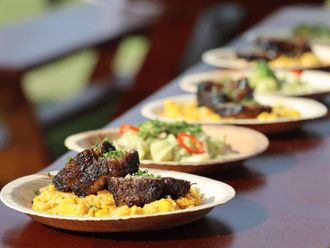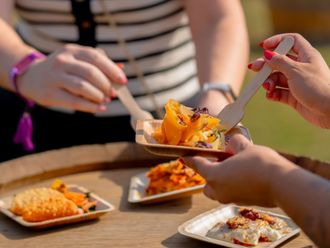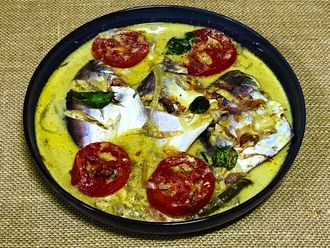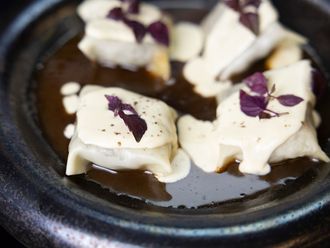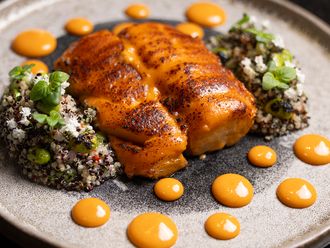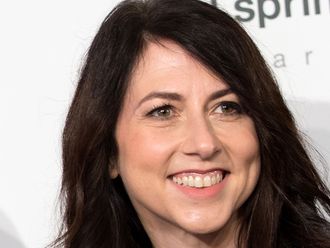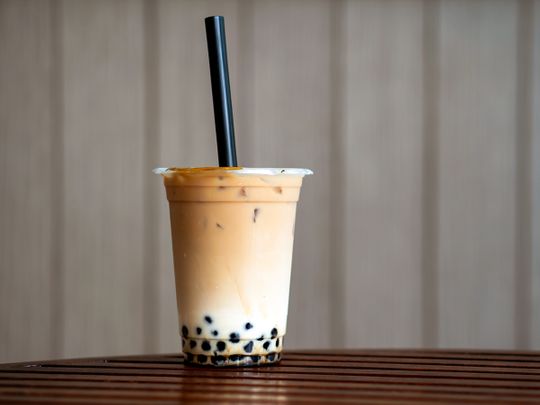
What started off as a Taiwanese drink sold in a small shop many years ago, has turned into a global addiction with a massive fan following. We're talking Boba Tea. This versatile beverage with an endless number of combinations will definitely quench your thirst but also comes with a fun burst of flavours in the form of its chewy tapioca bubbles.
What is Boba?
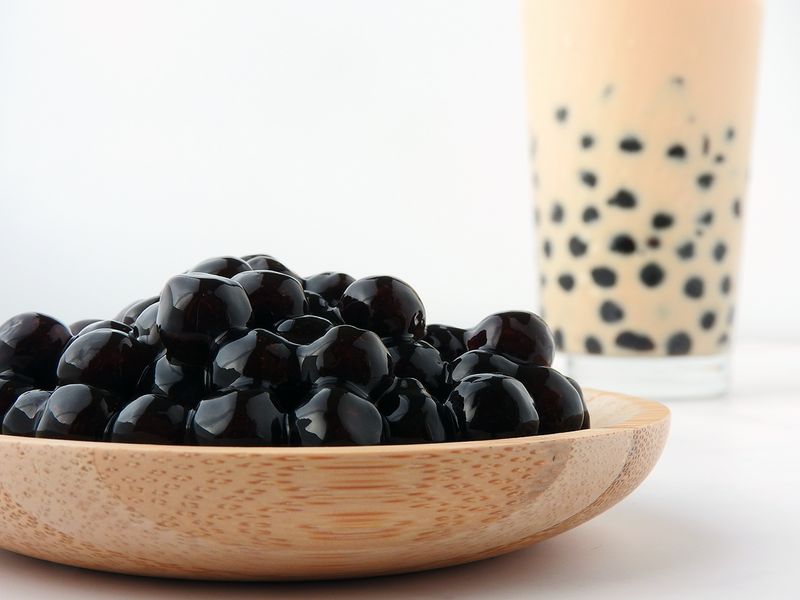
If you have seen a cup of Boba Tea and wondered: “Are those fish eggs?”, I can relate. It took years of convincing my parents to let me finally try it, and although the fish egg appearance made me sceptical, once the pearls burst with flavour in my mouth, I was addicted. The sweet Taiwanese drink, which has become an obsession for many across the world, contains tapioca bubbles as a key ingredient, which can often have a caviar-like appearance.

If I’m ever feeling down, a cup of Boba Tea always puts a smile on my face. It’s really fun experiencing the bubbles pop in my mouth. I don’t get that feeling from any other beverage.
It is a sweet beverage that traditionally consists of milk tea – usually served cold – and tapioca pearls, served in a plastic sealed cup with a straw, around 1cm wide, to allow the pearls to go through it. Boba refers to both the drink as well as the pearls themselves, made with tapioca flour, extracted from cassava, a starchy root vegetable. Tapioca pearls are also gluten free and vegan making it accessible for all palettes.
Boba – the origin story
Many people argue over the origins of Boba. According to Taiwan-based English daily Taipei News, the main dispute over who first created this beverage is between two rival Taiwanese teahouse chains. The Hanlin Tea Room, in the southern Taiwanese city of Tainan, claims that its owner Tu Tsung-ho saw tapioca pearls at a supermarket in 1986, and in a moment of inspiration decided to boil them and add them to milk tea. Loving the new food experience, he decided to add it to the menu of his teahouse.
On the other hand, Chun Shui Tang teahouse, headquartered in Taichung City, central Taiwan, claims that in 1987, its owner Lin Hsiu-hui, was experimenting with tapioca pearls – her favourite childhood snack. She added the pearls to milk tea, and then topped it up with lemon black tea, thus creating the first Boba drink.
Regardless of where it first came from, Boba Tea was mostly consumed in the region of East Asia, until it started becoming popular in the 1990s in the US, brought in by Asian immigrants. It truly became global once it got popular on Instagram. I’m sure you've seen it all over your social media, I know I am guilty of posting it too!
Social media’s obsession with Boba
According to StoreHub Business blog, a Malaysian online platform that specialises in food and beverages merchandise and technology, Boba gained popularity in Malaysia and nearby countries in 2018 when tea shops began to focus on the aesthetic of the drink, thus encouraging people to share pictures of their tea on social media.
Even today, shops continue to look for new ways to serve the drink to make it ‘Insta-worthy’. While some tea shops are serving the drink in a sippy cup, others are opting for plastic bags or even a lightbulb-shaped glass. You can also find a version of this sweet drink in Filipino culture called Sago’t Gulaman.
Whenever I open TikTok or Instagram my feed is flooded with Boba content. Trends on social media revolving around Boba have also contributed to its popularity in a big way. People are sharing months’ long compilations of their daily Boba intake, with short clips taken each day of the straw piercing the cup, while others share homemade recipes for pearls and tea infusions.
Many people have attempted the #bobachallenge, which grew popular on TikTok and has accumulated around 162 million views as of January 2022. The challenge includes trying to pierce the centre of the lid using the straw with your eyes closed. This may sound easy, but it has led to many spilling their drinks or even breaking their cups!
Customise it to suit your taste
Perhaps another reason for the popularity of the drink is how versatile it is. There is something for everyone. Lactose intolerant? Have some fruit tea. Need an extra boost of caffeine? Try some Boba coffee. Don’t know what to have for dinner? Order some Boba pizza! Okay, that might not be the most popular choice, but as weird as it sounds, it is a thing.
If you want to start with the classics, though, try some classic milk tea or brown sugar milk tea.
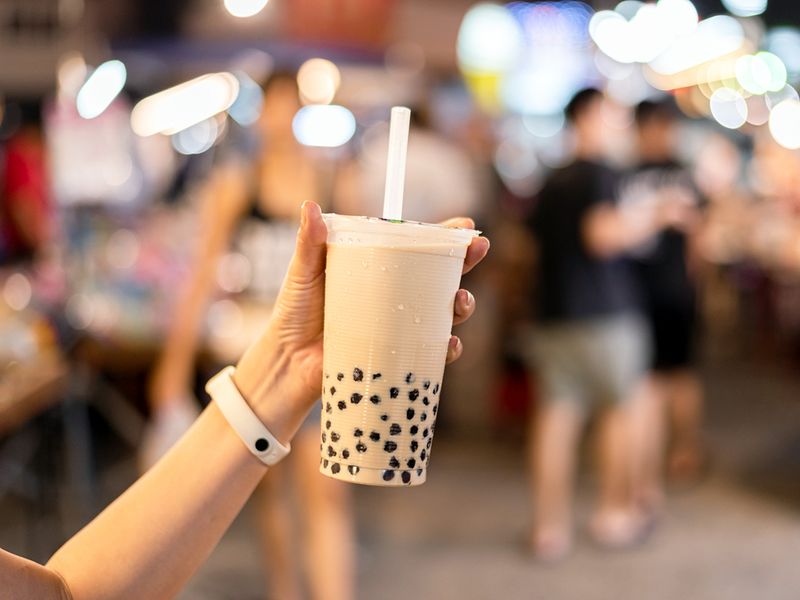
Source: Eater, American Food Blog (2019)
Boba can also be served with fruit jelly, aloe vera jelly or grass jelly (a Chinese herbal dessert made from mesona plants and cornstarch), instead of tapioca pearls, but these are often paired with more fruity teas, like fruit-flavoured green tea.
This drink has found its way to all corners of the world and into the hearts of many. Some outlets in the UAE even sell Karak Boba tea. Other Middle Eastern flavours such as saffron and rose water have turned into Boba Tea avatars too. There are no boundaries with Boba, so go wild and find something that works for you. For those who are health conscious, you can opt to customise the type of milk, level of sweetness and volume of toppings used in your drink.
Because of the endless possibilities, you can really go on a long journey with this drink. In fact, it took me three years of trial and error to find my favourite combination - strawberry green tea with pomegranate and mango pearls.
So why the hype?
The UAE joined the hype for Boba Tea in 2012 when café Bubbles and Boba opened in Dubai Mall. Now, you can find Boba across the Emirates in cafeterias, restaurants and tea shops.
20-year-old Sharjah student Joseph Henry drinks Boba Tea because he enjoys the sensation of the pearls bursting in his mouth.
“If I’m ever feeling down, a cup of Boba Tea always puts a smile on my face. It’s really fun experiencing the bubbles pop in my mouth. I don’t get that feeling from any other beverage,” Henry said.
20-year-old Dubai resident and Boba lover Jana Sabbagh said she remembers waiting in line for hours a few years ago to get a cup of Boba Tea.

When lockdown restrictions were lifted in June of 2020, one of the first places I wanted visit was a Boba shop. When I arrived I was shocked to see a huge line of people standing outside the shop waiting to be served. I stood in the heat for about an hour and a half but it was worth it, that cup of Boba was delicious.
“When lockdown restrictions were lifted in June of 2020, one of the first places I wanted visit was a Boba shop. At the time this shop did not deliver, so I was desperate for a cup of Boba, I had been craving it for months. When I arrived I was shocked to see a huge line of people standing outside the shop waiting to be served. I stood in the heat for about an hour and a half but it was worth it, that cup of Boba was delicious,” said Sabbagh.
The drink is mainly popular among the youth here in the UAE. When you visit a Boba shop, expect to be surrounded by teenagers. Ruby Tielago, a barista at Booba Tea Shop in Kite Beach said this drink is popular amongst the younger generation because of the variety of flavours.
“Kids love the sugary taste of the drink and enjoy the fruity popping Boba pearls the most because they come in a variety of flavours. Boba is also very popular because it’s something you can chew and drink at the same time,” said Tielago.
Regardless of the reasons why, Boba remains a popular drink beloved by many, young and old. If all this Boba talk has sparked your interest, here is a recipe for classic milk tea by Mariam Al Mokayyad, a nutritionist and chef based in Amman, Jordan, with a passion for all things pastry and desserts.
Regardless of the reasons why, Boba remains a popular drink beloved by many, young and old. If all this Boba talk has sparked your interest, here is a recipe for classic milk tea by Mariam Al Mokayyad, a nutritionist and chef based in Amman, Jordan, with a passion for all things pastry and desserts.
She first tried Boba in 2012, when her Malaysian friend took her to try it while on a trip in London. Since then, Al Mokayyad has been trying to replicate the drink and make it at home. This is the recipe she uses when she craves a refreshing cup of milk tea. In the UAE, you can easily find tapioca pearls in your neighbourhood supermarket or hypermarket, in the world food section, or you can order it online.
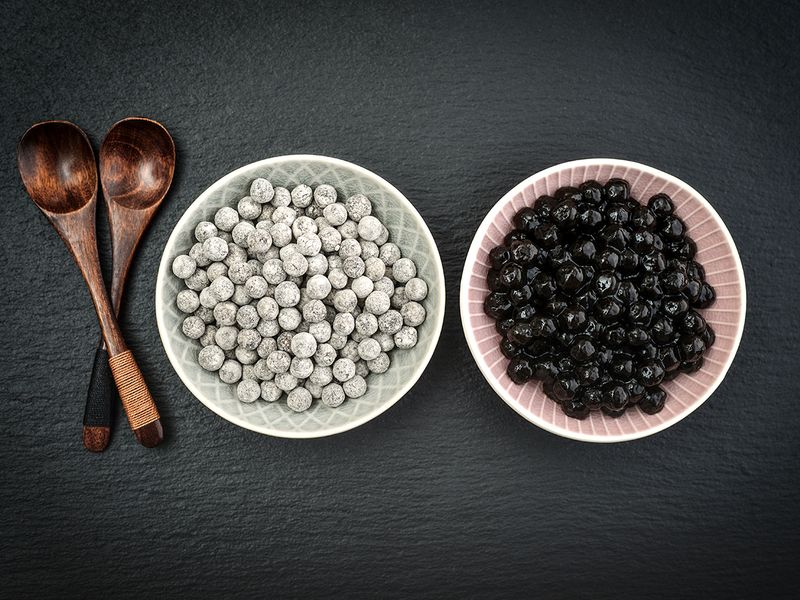
How to make Milk Boba Tea
Ingredients
3 tbsp of black tea powder
250 ml creamer (You can use a non-dairy creamer, if you are lactose intolerant)
2 tbsp tapioca pearls, store bought
½ cup brown sugar
Ice cubes (optional)
Method
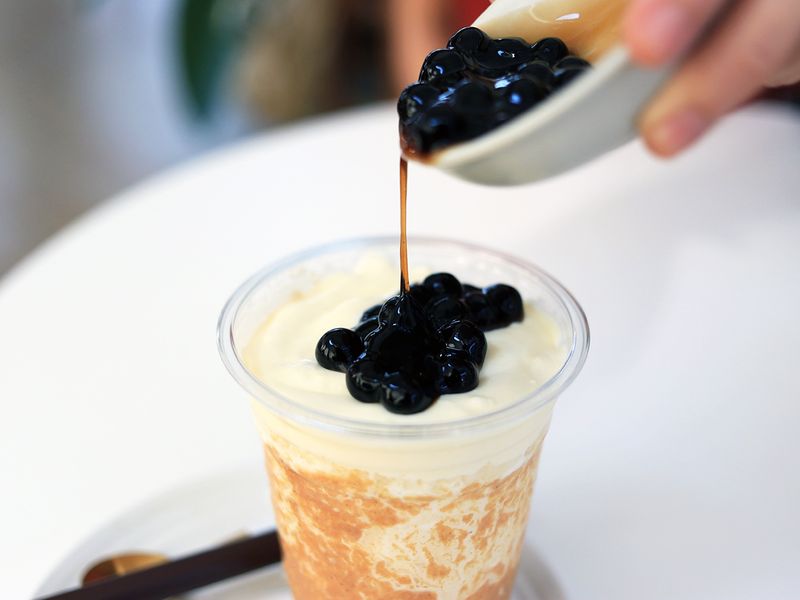
To make brown sugar syrup:
Makes around 16 servings
1. Pour ½ a cup of brown sugar in a pan with half a cup of hot water.
2. Stir the mixture until sugar is completely dissolved.
3. Allow the mixture to simmer for two to three minutes to ensure all sugar is dissolved.
4. Remove from the heat and cool the mixture.
If stored in a tightly sealed container, this syrup can last for three to four weeks.
To prepare the pearls:
Makes one serving
1. Boil the pearls in three cups of hot water, or enough water to fully submerge the pearls, on a stovetop over medium heat for 25 minutes.
2. Remove from heat and allow pearls to rest so that they can hold their shape.
3. After 10 minutes, wash the pearls with cold water to remove excess starch and avoid stickiness.
4. Toss the pearls in 2 to 3 tbsp of brown sugar syrup, depending on how sweet you want them to be. This will stop them from sticking to each other and will add to the sweetness.
To make milk tea:
Makes one serving
1. Add 3 tbsp of black tea powder to 4 cups of hot water and bring to a boil over medium heat.
2. Remove the tea from the pan and pour it into a cup filled with ice. The ice is optional.
3. Add 250 ml of the creamer, and stir well using a spoon.
4. Top the drink with two large tablespoons of tapioca pearls, some extra brown sugar syrup for decorative purposes and enjoy.
Share your food stories with us at food@gulfnews.com





